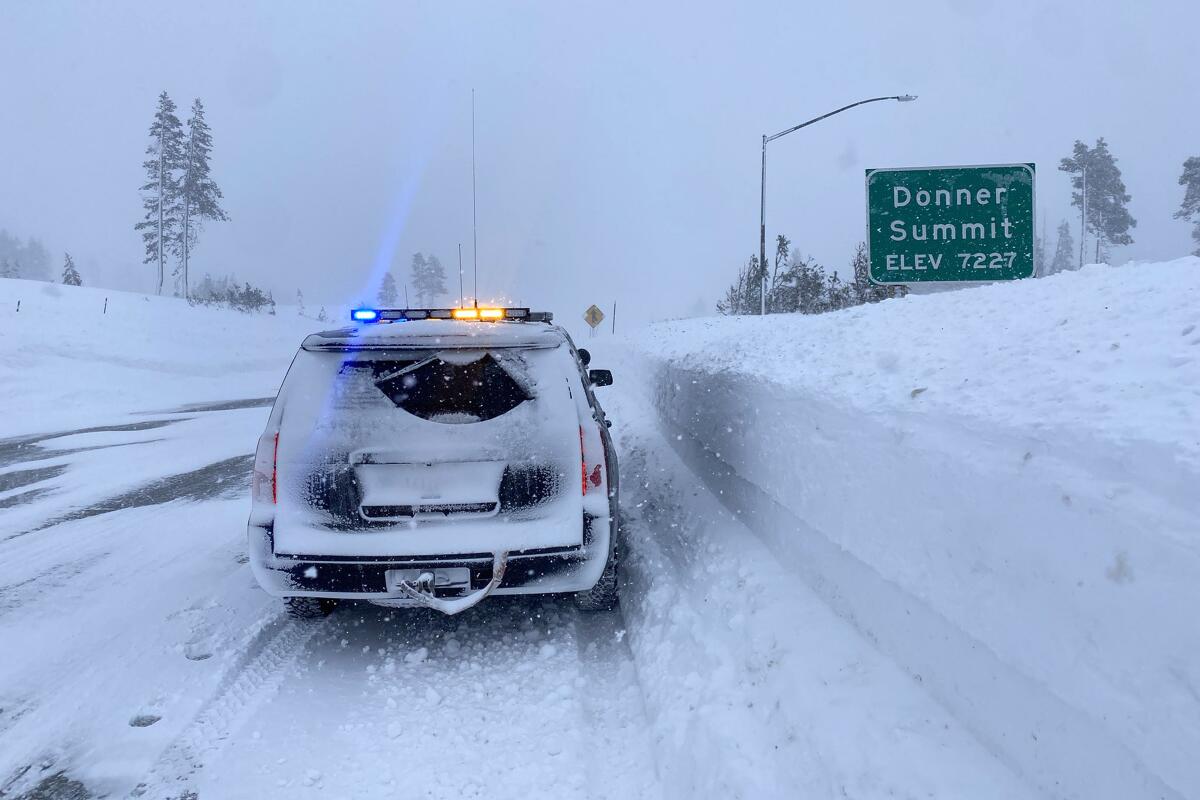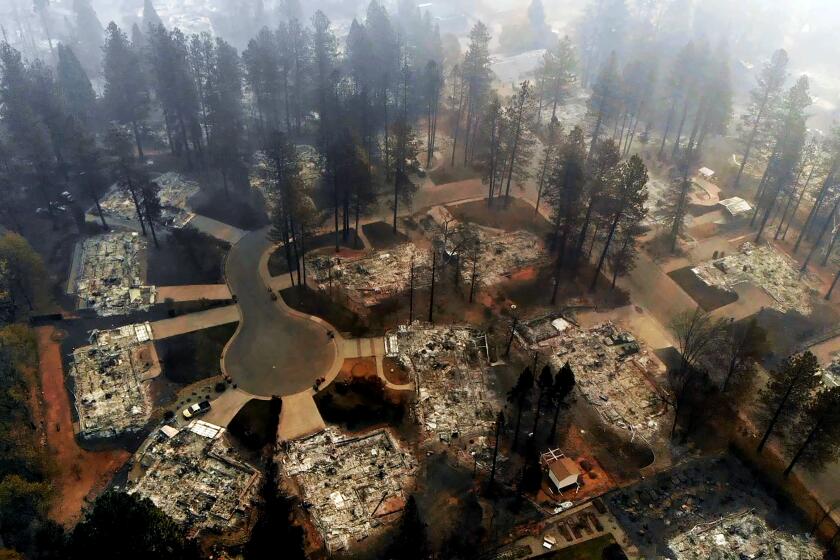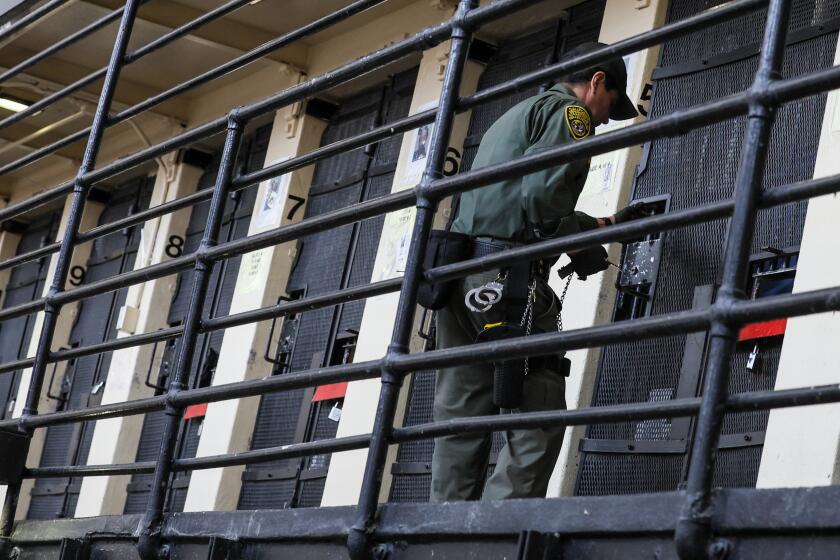Editorial: Welcome the bout of winter storms, just don’t call them drought busters

A series of storms have made for an exceptionally rainy and snowy start to California’s winter season, pushing snowpack and precipitation well above 150% of normal for this time of year and bringing a welcome influx of moisture amid an ongoing drought.
So much snow fell in the Sierra Nevada this week that it ground travel to a halt around Lake Tahoe — where just four months ago the Caldor fire triggered mass evacuations and spewed such volumes of smoke and ash that it clouded the lake’s clear blue waters. UC Berkeley Central Sierra Snow Lab, located at Donner Pass, reported the snowiest December on record. The lab measured 210 inches of snow as of Wednesday, shattering the previous record, set in 1970, by more than 2 feet.
Talk about boom and bust. Swings between fire and flood, deluge and dryness are quintessentially Californian. But those extremes are being amplified before our eyes by the warming climate.
If ‘drought’ means a period of dry years followed by a return to the norm, California is not in drought. The current climate is the norm.
It’s been wet in Southern California as well. The latest in a string of storms is not expected to clear out until New Year’s Eve.
And that could be only the beginning. Historically, California’s wettest months are January and February.
All that precipitation raises hope for a possible end to the severe multiyear drought that made the 2021 California water year, measured from Oct. 1, 2020, to the following Sept. 30, the second-driest on record.
Rainfall is helping to replenish reservoirs that had run dangerously low or in some cases completely dry. As the weather warms again, snowmelt may help too.
No one loves a scold or a doomsayer, especially when the news is good. Still, some words of caution are in order.
First, it’s important to remember that “drought” is defined not merely by whether the rain falls but by how much water is available for human needs and for keeping the natural environment healthy. The entire state is still suffering at least “moderate drought,” as calculated by the U.S. Drought Monitor, and in more than 90% of California the drought remains “extreme.” Much of the land is desiccated, and groundwater supplies are dangerously overtapped. Many more storms will be needed to make up for years with little rain or snow.
Will we get those storms? We can hope. A wet December does not guarantee a wet January or February. It generally takes a season of powerful storms, known as atmospheric rivers, lining up as if on a conveyor belt, blasting ribbons of moisture over the region, to constitute a “drought buster.”
Nor does a full Sierra snowpack now guarantee steadily melting spring and summer snow, as it once did. A warmer climate means snow often melts earlier in the year, and more rapidly, than it did during most years in the 20th century. California water experts predict that wet winters are as likely to cause flooding as they are to fill reservoirs at a manageable pace.
This isn’t entirely new. California has long been a place of weather extremes. Flooding in 1861 (following, in California fashion, 20 years of drought) submerged the Capitol in Sacramento and lawmakers had to flee. Much of the San Joaquin Valley was inundated and became a 300-mile-long inland sea. Other years have seen regional flooding, as when a pair of storms in March 1938 caused the Los Angeles River to overflow its banks and flooding across the basin resulted in more than 100 deaths.
Southern California needs to capture and reuse more of its rainfall while Northern California needs to keep more of it flowing to the sea.
That was before most of the state’s large reservoirs and other water and flood control projects were constructed, but the state’s low areas could be flooded again because of more volatile weather patterns, including the kind of killer heat waves that plagued the West earlier this year and rising average temperatures that are amplifying California’s climate extremes.
Much of the flood potential is due to poor development decisions in what are natural floodplains. To protect ourselves, replenish our depleted groundwater and restore the natural environment, we’d be wise to invest more in restoring those floodplains so that they can gather runoff that might otherwise threaten homes and roads and wreak environmental havoc. Water that collects in floodplains can, when flood risks subside, naturally seep underground into aquifers.
California’s average annual precipitation levels have not changed, when drought years and flood years are considered in five- or 10-year clusters. But when and where the rain falls, and how much the snow melts — those things have changed a lot. Even if it’s currently a very wet state, it’s also, simultaneously, a very dry state. Drought and flooding go together, and the state’s water and development policies must be adapted to accommodate both.
More to Read
A cure for the common opinion
Get thought-provoking perspectives with our weekly newsletter.
You may occasionally receive promotional content from the Los Angeles Times.








